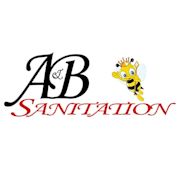Search results
Aug 7, 2023 · Below are ten of the most common types of septic systems used, followed by illustrations and descriptions of each system. The list is not all-inclusive; there are many other types of septic systems. See below for illustrations and descriptions of various types of conventional and alternative septic systems.
- SEPTIC TANK. After passing from the house, the wastewater collects in the septic tank. Septic tanks typically range from 1,000 to 2,000 gallons and are made of concrete, heavy plastic, or metal.
- Leach Field. The leach field (also called a “drain field”) consists of rows of perforated pipes typically buried in gravel trenches 18 to 36 inches below grade — deep enough to avoid freezing, but close enough to the surface to allow air to reach the bacteria that further purify the effluent (see illustration below).
- SIZING THE LEACH FIELD. For the system to work well, the leach field must be properly sized for the soil type and volume of wastewater, typically based on the number of bedrooms.
- SEPTIC SYSTEM CARE & MAINTENANCE REQUIRED. Treat your system well and you will be rewarded with years of trouble-free service. Periodic pumping of the septic tank is essential to remove the solids (sludge) and grease layer (scum) from the tank.
- Conventional System. This is the system you’ll usually see at a single-family home or a small business. In a conventional system, your waste goes to a septic tank.
- Chamber System. A sister to the conventional system is the chamber system. They started getting popular in the early 90s. As technology got better, people realized that they could do away with the gravel pits in the conventional system.
- Conventional Pump System. In this flow diagram, we take another step. Between the distribution box and septic tank, there is a pump tank. Why use a pump, you ask?
- Aerobic Treatment Unit. An Aerobic Treatment Unit is also called an ATU. In an ATU, you will see properties that are reminiscent of a sewage plant. It uses a lot of the same principals and science, actually.
Aug 7, 2023 · Septic systems use a combination of nature and proven technology to treat wastewater from household plumbing produced by bathrooms, kitchen drains, and laundry.
A well-maintained septic system is trouble-free and something a homeowner doesn’t have to think about much. Read this guide to learn how to care for your septic system.
A septic system consists of piping running from the home’s drain system to a sealed tank, and then out to a series of pipes called leach pipes. As waste is flushed down the drain, it travels down the waste pipe to the tank where it separates, breaks down, and eventually ends up back into the soil.
Aug 7, 2023 · If you live in a rural area, there is a high likelihood your home is served by a septic system. You can also talk to your neighbors. If they all have septic systems, your home likely does too. In many cases, people with septic systems also have a private drinking water well instead of public water.





